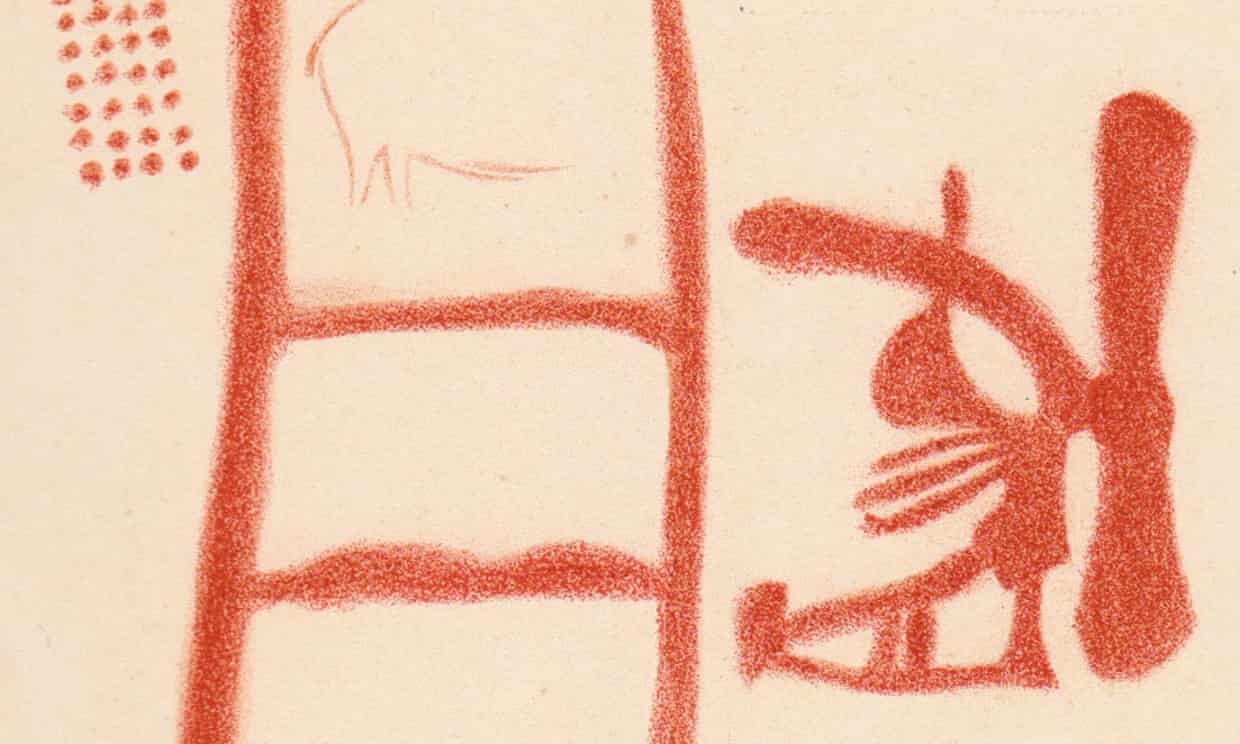Drawing of Panel 78 in La Pasiega by Breuil et al (1913). The red scalariform (ladder) symbol has a minimum age of 64,000 years but it is unclear if the animals and other symbols were painted later. Photograph: Breuil et al
The three human subspecies known to have hybridised to produce the present human population of the planet, Neanderthals, Homo sapiens and Denisovans, last had a common ancestor more than half a million years ago. Until now it has been assumed that the only branch of her descendants to think symbolically was us, Homo sapiens. In fact, until the development of sequencing techniques sensitive enough to work on ancient DNA, it was thought that the other two species had died out entirely, rather than leaving portions of their genome in European and Melanesian populations respectively. But the discovery, reported last week, of palaeolithic art at four sites in Spain that dates from the time when the peninsula was occupied only by Neanderthals, shows that they worked with symbols of stone and paint.
We have no idea what these markings mean. That is in the nature of symbolism, and indeed of language: the meaning of a sound, or a marking on the wall, is given by the community that uses it; it can’t be read by outsiders. We already know that Neanderthals were anatomically equipped for speech; their use of painted symbols suggests that they could make audible symbols and not just visible ones.
Read the rest of this article...

No comments:
Post a Comment
Note: Only a member of this blog may post a comment.